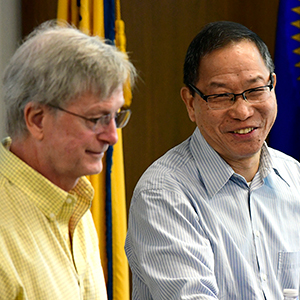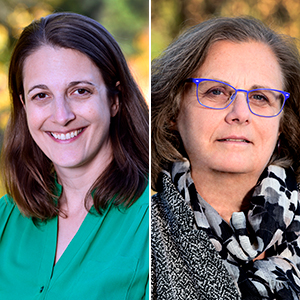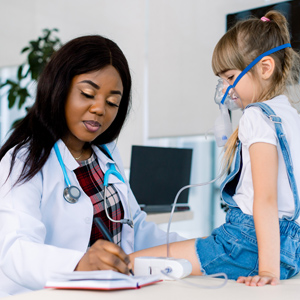Dale Sandler, Ph.D., NIEHS Epidemiology Branch chief, delivered an invited lecture Sept. 20 at the National Institutes of Health (NIH) in recognition of her outstanding contributions to biomedical research. She chose to focus on the Sister Study, a study she, Clarice Weinberg, Ph.D., and others at NIEHS developed years ago to address increasing community concerns about rising breast cancer rates and a lack of studies focused on potential environmental causes.
The Sister Study, one of the institute’s largest and longest ongoing studies, examines the environmental and genetic influences on breast cancer in women with a family history of the disease. The landmark study celebrates its 20th anniversary this October.
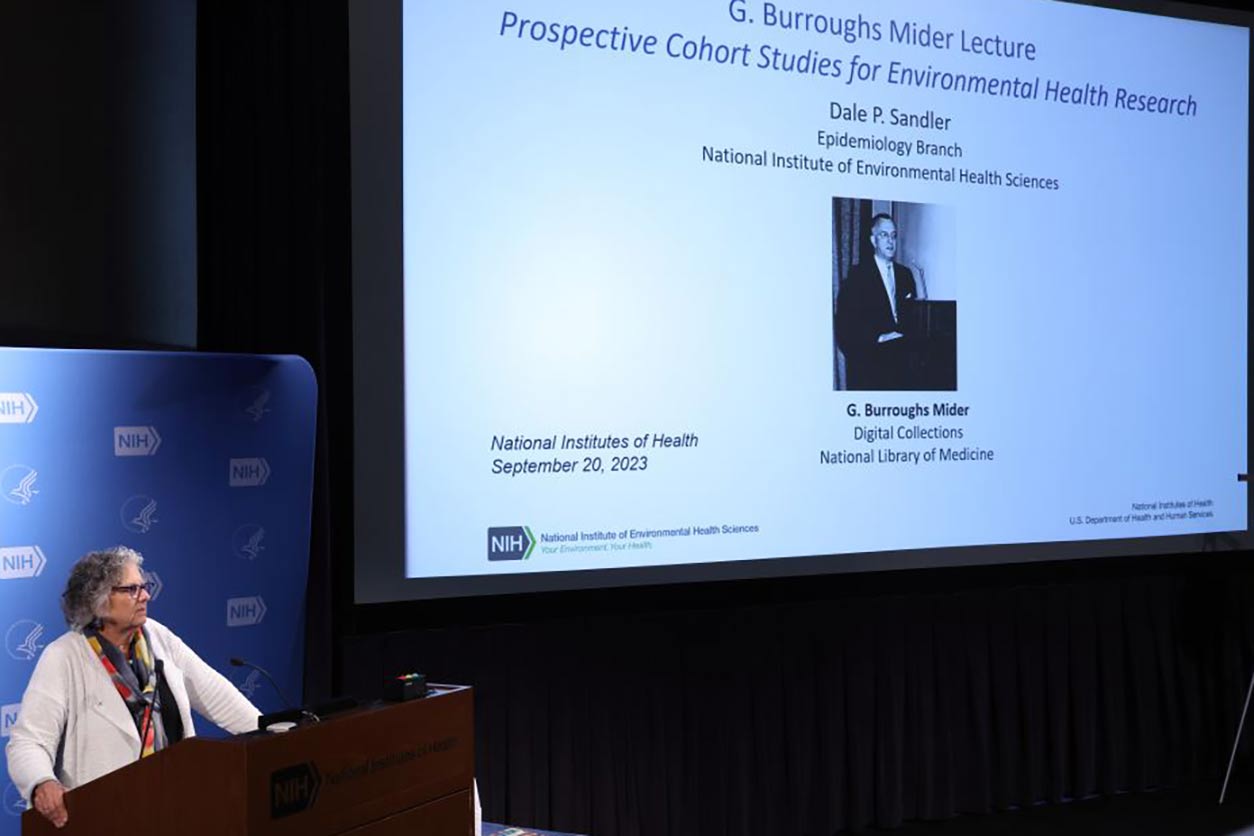
During Sandler’s talk, she mentioned the three major studies she leads: the Agricultural Health Study, the GuLF Study, and the Sister Study. She focused on the Sister Study’s 20-year history, and its many accomplishments, including its ability to enroll and keep engaged more than 50,000 women — who are sisters of women who have had breast cancer — from all 50 states and Puerto Rico.
Sandler highlighted how researchers have discovered many of the factors that may contribute to a woman developing breast cancer, including air pollution, early life trauma and psychosocial stress, dietary factors, permanent hair dye and chemical hair straighteners, exposure to light at night, and obesity. She also discussed how exposure-related changes to DNA may influence biological aging and breast cancer risk, and she described how study data are used to investigate causes of other health conditions besides breast cancer.
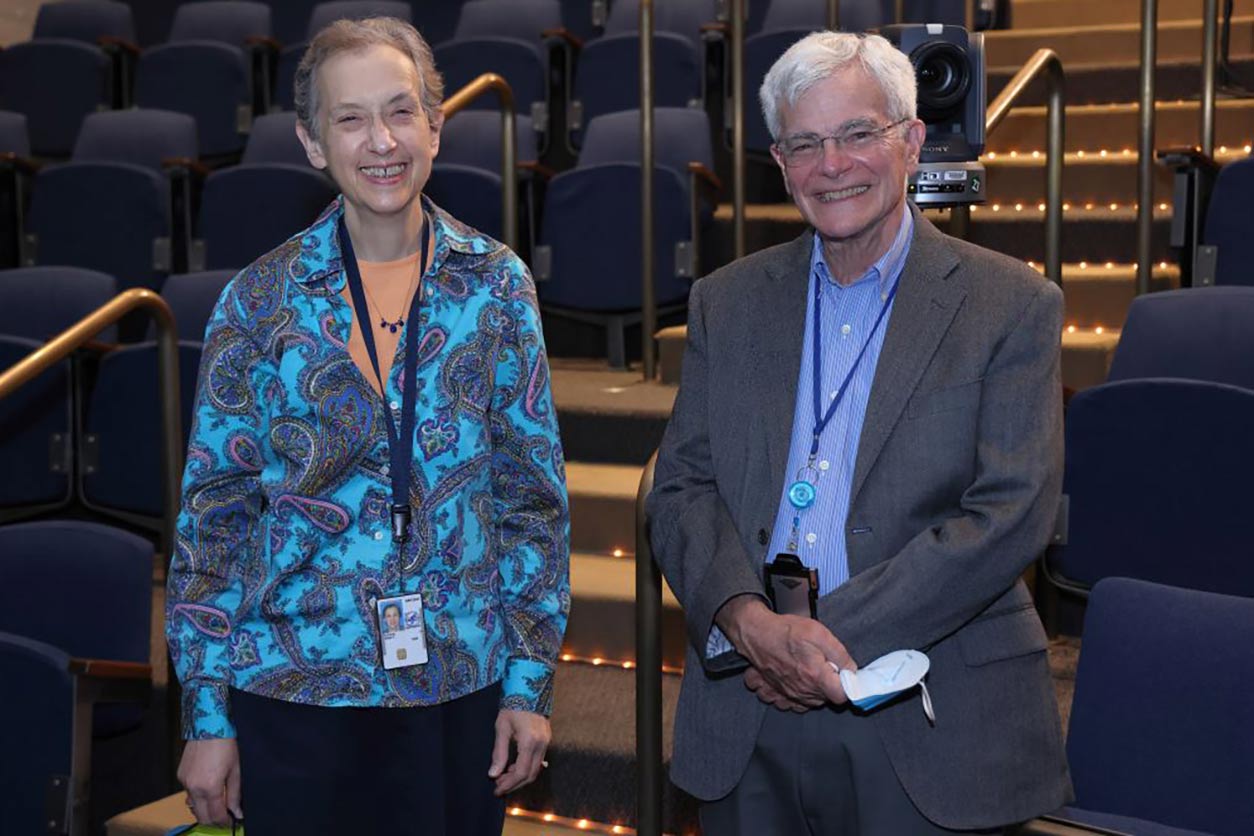
G. Burroughs Mider Lecture at NIH
“It’s an honor to be invited to give such a prestigious lecture,” Sandler said, after introductory remarks from the NIEHS Scientific Director Daryl Zeldin, M.D.
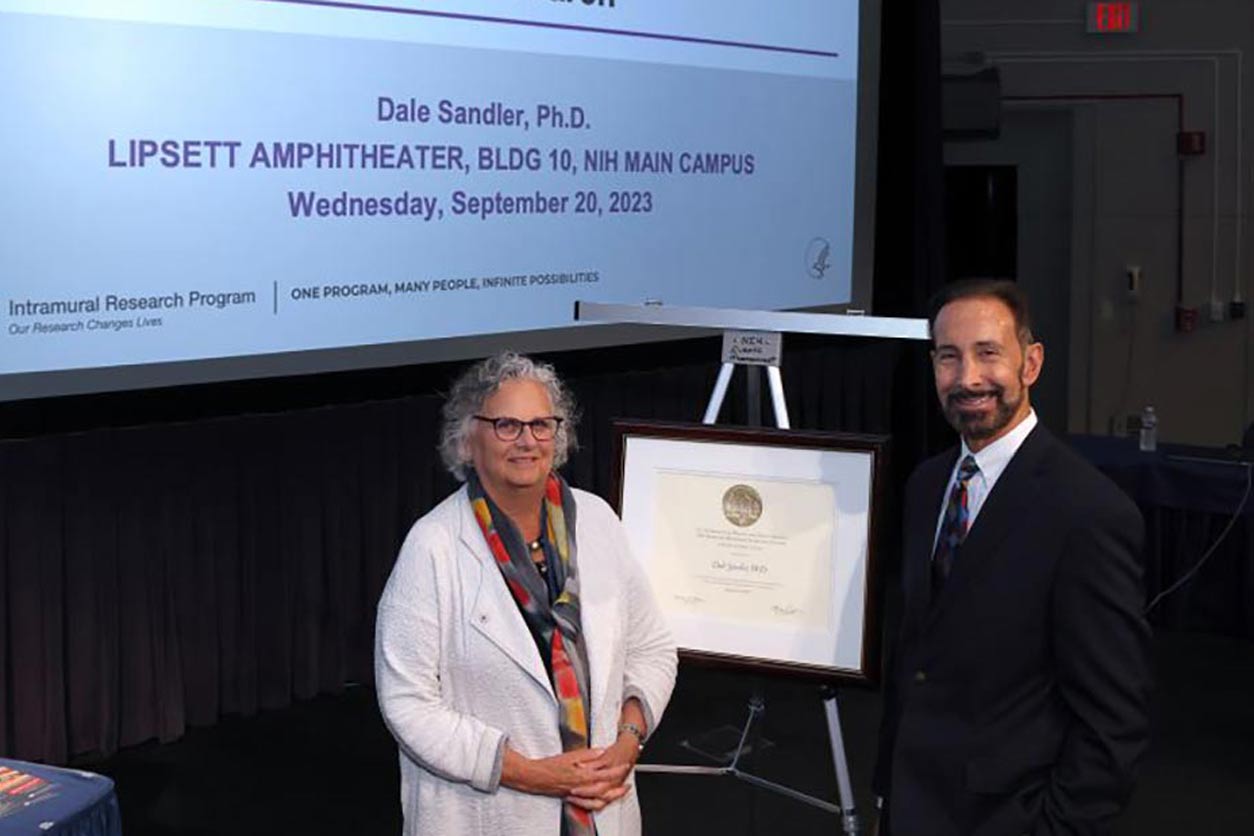
Sandler presented the G. Burroughs Mider Lecture, which was established in 1968 in honor of the first NIH director of laboratories and clinics. The lecture highlights the importance of clinical research and opportunities for collaboration between clinical and basic science researchers at NIH. This year’s lecture was presented as part of the NIH Research Festival, an annual event that highlights the work of the NIH intramural research program, which comprises approximately 1,000 principal investigators, 5,000 trainees, and thousands of support staff.
The talk was especially meaningful to Sandler because the lecture nomination came from the Women Scientists Advisors, a group of elected representatives from NIEHS (including Sue Fenton, Ph.D., Carmen Williams, M.D., Ph.D., and Vicki Sutherland, Ph.D.), and other institutes or centers who represent the interests of women scientists across NIH.
Zeldin, who oversees the intramural program that funds the Sister Study, pointed out in his remarks that Sandler was the second woman at NIEHS to lead a branch. In addition to leading the Epidemiology Branch since 2003, Sandler has published more than 650 peer-reviewed papers, and she has won numerous awards over the years, including both scientist and mentor of the year awards. She is well known for her passion for mentoring the next generation of researchers.
Sister Study anniversary commemoration
“In October, the Sister Study will turn 20, and our communications office heard that and ran with it,” Sandler said during the last slide of her presentation.
“Time just seems to fly by,” she added. “It was fall of 2003 when we recruited our first participant, and about five years later when the study surpassed its goal of 50,000 participants. We are extremely grateful for the continued participation of the women in this study and for the funding support we continue to receive from NIEHS leaders.”
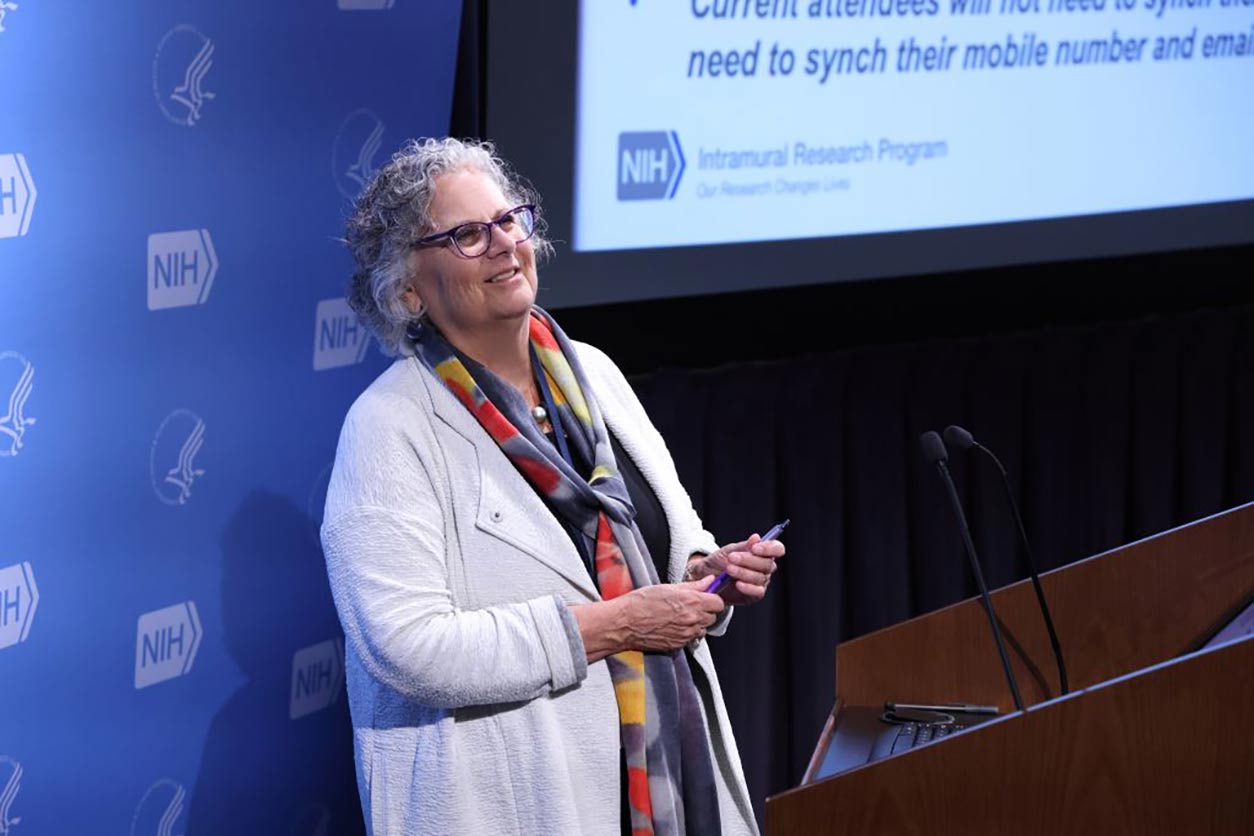
To commemorate this 20-year milestone and to mark National Breast Cancer Awareness Month, the NIEHS Office of Communications and Public Liaison worked with the study team to develop a suite of products including a 10-minute video, available in English with Spanish captions.
The video and additional resources about the study are available at the Sister Study website. Follow #SisterStudy20 and NIEHS social media accounts throughout the month for the rollout of additional commemorative products.
(Robin Mackar is a writer and media relations coordinator in the NIEHS Office of Communications and Public Liaison.)





